
The Silent Speaker is a Nero Wolfe detective novel by Rex Stout, first published by the Viking Press in 1946. It was published just after World War II, and key plot elements reflect the lingering effects of the war: housing shortages and restrictions on consumer goods, including government regulation of prices, featuring the conflict between a federal price regulatory body and a national business association, paralleling the conflicts between the Office of Price Administration and the U.S. Chamber of Commerce and the National Association of Manufacturers.

Bad for Business is a mystery novel by American write Rex Stout, starring his detective Tecumseh Fox, first published in 1940. Private investigator Tecumseh Fox was the protagonist of three mysteries written by Stout between 1939 and 1941.

Trio for Blunt Instruments is a collection of Nero Wolfe mystery novellas by Rex Stout, published in 1964 by the Viking Press in the United States and simultaneously by MacMillan & Company in Canada. The book comprises three stories:
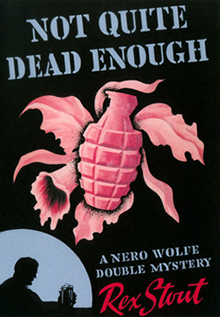
Not Quite Dead Enough is a Nero Wolfe double mystery by Rex Stout published in 1944 by Farrar & Rinehart, Inc. The volume contains two novellas that first appeared in The American Magazine:
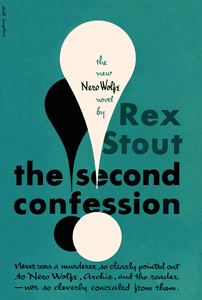
The Second Confession is a Nero Wolfe detective novel by Rex Stout, first published by the Viking Press in 1949. The story was also collected in other omnibus volumes, including Triple Zeck. This is the second of three Nero Wolfe novels that involve crime boss Arnold Zeck – Wolfe's Professor Moriarty. In this novel he telephones Wolfe to warn him off an investigation and retaliates when Wolfe refuses to cooperate. Though the crime is solved, the ending is left open.

And Be a Villain is a Nero Wolfe detective novel by Rex Stout, first published by the Viking Press in 1948. The story was collected in the omnibus volumes Full House and Triple Zeck.

The Rubber Band is the third Nero Wolfe detective novel by Rex Stout. Prior to its publication in 1936 by Farrar & Rinehart, Inc., the novel was serialized in six issues of The Saturday Evening Post. Appearing in one 1960 paperback edition titled To Kill Again,The Rubber Band was also collected in the omnibus volume Five of a Kind.
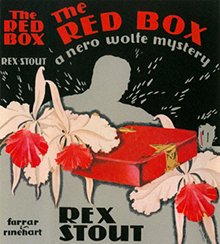
The Red Box is the fourth Nero Wolfe detective novel by Rex Stout. Prior to its first publication in 1937 by Farrar & Rinehart, Inc., the novel was serialized in five issues of The American Magazine. Adapted twice for Italian television, The Red Box is the first Nero Wolfe story to be adapted for the American stage.

Where There's a Will is the eighth Nero Wolfe detective novel by Rex Stout. Prior to its publication in 1940 by Farrar & Rinehart, Inc., the novel was abridged in the May 1940 issue of The American Magazine, titled "Sisters in Trouble." The story's magazine appearance was "reviewed" by the FBI as part of its surveillance of Stout.

Too Many Women is a Nero Wolfe detective novel by Rex Stout, published in 1947 by the Viking Press. The novel was also collected in the omnibus volume All Aces.
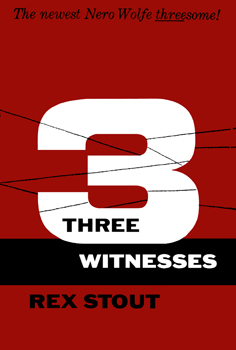
Three Witnesses is a collection of Nero Wolfe mystery novellas by Rex Stout, published by the Viking Press in 1956 and itself collected in the omnibus volume Royal Flush. The book contains three stories that first appeared in The American Magazine:

If Death Ever Slept is a Nero Wolfe detective novel by Rex Stout, published by the Viking Press in 1957 and collected in the omnibus volume Three Trumps.

Plot It Yourself is a Nero Wolfe detective novel by Rex Stout, published by the Viking Press in 1959, and also collected in the omnibus volume Kings Full of Aces.
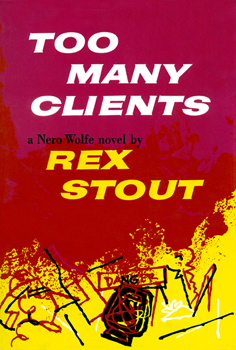
Too Many Clients is a Nero Wolfe detective novel by Rex Stout, published by the Viking Press in 1960, and later collected in the omnibus volume Three Aces.

The Final Deduction is a Nero Wolfe detective novel by Rex Stout, published by the Viking Press in 1961 and collected in the omnibus volume Three Aces.

Mountain Cat is a mystery novel by Rex Stout, first published in book form in 1939. The story first appeared in the June 1939 issue of The American Magazine, abridged and titled Dark Revenge.

The Mother Hunt is a Nero Wolfe detective novel by Rex Stout, first published by Viking Press in 1963.
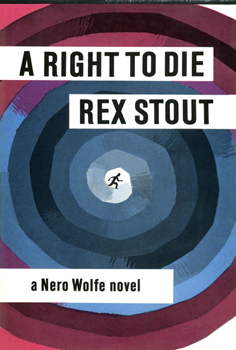
A Right to Die is a Nero Wolfe detective novel by Rex Stout, first published by the Viking Press in 1964.
"Murder Is No Joke" is a Nero Wolfe mystery novella by Rex Stout, first published in the 1958 short-story collection And Four to Go.
"Blood Will Tell" is a Nero Wolfe mystery novella by Rex Stout, first published in the December 1963 issue of Ellery Queen's Mystery Magazine. It first appeared in book form in the short-story collection Trio for Blunt Instruments, published by the Viking Press in 1964.



















